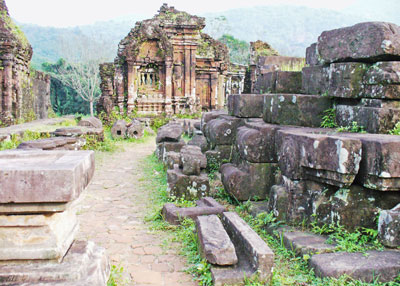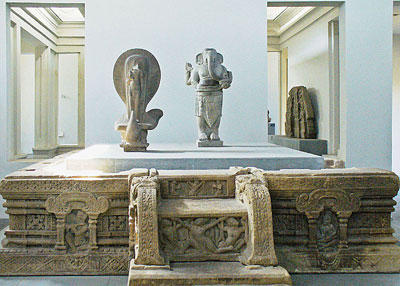Vietnam’s forgotten Champa kingdom
The ruined, ancient Hindu temples slowly emerged from the lush, green jungle. It had been a long ride from my hotel outside Hoi An, Vietnam, but as soon as I viewed the temples of My Son, I felt transported back in time to Vietnam’s long-lost kingdom of Champa (AD 192-1832).
My tour, “Cultural Treasures of Vietnam & Cambodia,” with Vantage Deluxe World Travel (Boston, MA; 800/322-6677), took place Dec. 3-22, 2009. The price, including air from Tampa, Florida, and single supplement, was approximately $6,600.
Designated a UNESCO World Cultural Heritage Site in 1999, My Son is thought to have been the most important intellectual and religious center of the Champa kingdom. About 25 miles southwest of Hoi An, it lies in a verdant valley below Hon Quap, or “Cat’s Tooth Mountain.” Admission to the site cost VND60,000 (about $3.20).
Trading with India, the Chams adopted Hinduism, and most of the Cham temples were dedicated to Shiva, regarded as the protector of the Champa dynasties.
Archaeologists now know that the Chams first built their structures and then carved the temples’ ornamentation into the rust-brown brickwork. What is unknown is how the Chams succeeded in sticking their baked bricks together; perhaps they used a paste prepared with a botanical oil.
The next day, our tour included a visit to the Museum of Cham Sculpture in Danang, which houses the world’s finest collection of Cham art. Admission cost VND30,000 ($1.60). Displayed within the museum are masterpieces of sculpture dating from the seventh to thirteenth centuries. Hindu deities such as Shiva, Vishnu and Brahma are represented along with apsaras (celestial maidens) and scenes from the Hindu epic, the Ramayana.
During the war, Cham sites suffered massive bombings, causing irreparable damage, and the sites were also extensively mined. Even today, grazing cattle are killed by mines and tourists must stay on marked paths.
Before visiting Vietnam, I had known nothing about the lost kingdom of Champa, so learning about it and its rich culture was truly a revelation.
DAVID J. PATTEN
St. Petersburg, FL


